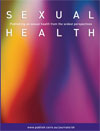SH22134Australian sexually transmitted infection (STI) management guidelines for use in primary care 2022 update
 , Christopher Bourne, Judith A. Dean
, Christopher Bourne, Judith A. Dean  , Nathan Ryder
, Nathan Ryder  , Vincent J. Cornelisse
, Vincent J. Cornelisse  , Sally Murray, Penny Kenchington, Amy Moten, Courtney Gibbs, Sarah Maunsell, Tyler Davis, Jessica Michaels and Nicholas A. Medland
, Sally Murray, Penny Kenchington, Amy Moten, Courtney Gibbs, Sarah Maunsell, Tyler Davis, Jessica Michaels and Nicholas A. Medland 
This major review of the ‘Australian Sexually Transmitted Infection (STI) Management Guidelines For Use In Primary Care’ highlights important aspects of the guidelines and provides the rationale for significant changes.
SH22134 Abstract | SH22134 Full Text | SH22134PDF (541 KB) Open Access Article




